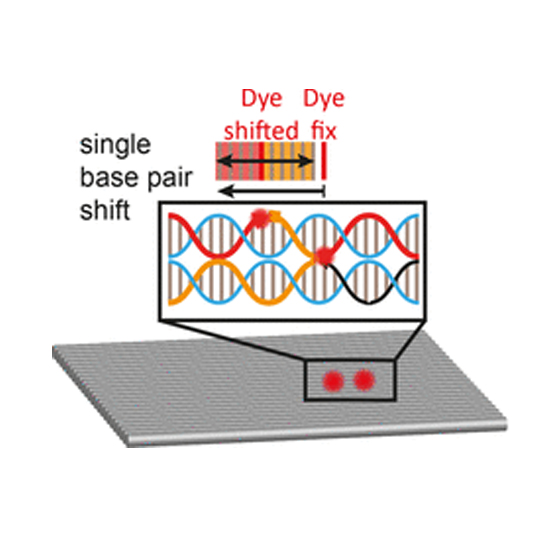Interchromophoric Interactions Determine the Maximum Brightness Density in DNA Origami Structures
25-Jan-2019
Nano Lett., 2019, 19 (2), pp 1275–1281, DOI: 10.1021/acs.nanolett.8b04845
Nano Lett., online article
An ideal point light source is as small and as bright as possible. For fluorescent point light sources, homogeneity of the light sources is important as well as that the fluorescent units inside the light source maintain their photophysical properties, which is compromised by dye aggregation. Here we propose DNA origami as a rigid scaffold to arrange dye molecules in a dense pixel array with high control of stoichiometry and dye–dye interactions. In order to find the highest labeling density in a DNA origami structure without influencing dye photophysics, we alter the distance of two ATTO647N dyes in single base pair steps and probe the dye–dye interactions on the single-molecule level. For small distances strong quenching in terms of intensity and fluorescence lifetime is observed. With increasing distance, we observe reduced quenching and molecular dynamics. However, energy transfer processes in the weak coupling regime still have a significant impact and can lead to quenching by singlet-dark-state-annihilation. Our study fills a gap of studying the interactions of dyes relevant for superresolution microscopy with dense labeling and for single-molecule biophysics. Incorporating these findings in a 3D DNA origami object will pave the way to bright and homogeneous DNA origami nanobeads.











